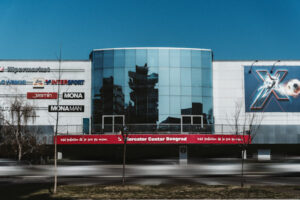By Agnieszka Tomczak-Tuzińska

It’s the consumers’ expectations, behavior, and purchasing decisions that shape the evolution of malls and set the foundations for effective communication strategies.
The development of technology has led to significant changes in the purchasing process. Today, everything we need is on our phones or iPads. The internet offers the possibility of comparing offers, prices, reviews, and shopping convenience. The offline world can’t rival the online realm in terms of product availability and price—and should not even try.
The internet, on the other hand, is no match for the traditional market in terms of shopping experience—the atmosphere or the pleasure of shopping. This sphere is becoming increasingly important for customers, leading to changes in the tenant mix.
The non-shopping offer—restaurants, fitness clubs, and cinemas, as well as tennis courts, aquariums, and even dry ski slopes—is getting increasingly important. Lifestyle is becoming an integral part—even a hallmark—of a mall, changing it into a local “agora,” or safe meeting place.
In this context, the marketers’ task has become to change the perception of malls’ functions, convincing the customers with a wide range of dedicated services that make their shopping experience better and more convenient—hands free shopping, valet parking, babysitting, “shop and fun” apps.
There are ever more campaigns that build brand awareness and promote the non-shopping offer, as well as word-of-mouth marketing and online campaigns emphasizing the uniqueness of a certain mall and corporate social responsibility (CSR) activities that build positive emotional attitudes towards a place.
We should remember, however, that the purpose of marketing is not only to increase footfall but, above all, to increase turnover. It is thus necessary to have excellent knowledge of customers, coming from observation and analysis of psychodemographic data.
Thanks to new technologies, it is possible to collect and process information on history and preferences of individual customers, their favorite places, and the ways of spending time in the mall. Quick and effective use of those data in sales campaigns and in personalized marketing is the key to success. Cooperation with tenants and integration of the data into one CRM system, which is necessary to boost sales in the omnichannel model, remains a challenge.
Close cooperation between malls and tenants is also vital in terms of creating added value in the form of comprehensive customer service programs that support the clients at all stages: decision-making, purchase, and after-sales. This is particularly important in the age of social media, through which the voice of a single consumer can demolish a longstanding reputation and a friend’s recommendation is more powerful than advertising.
Modern communication with customers should be based on dialogue and aim at building a genuine, valuable relationship. It should inspire curiosity, raise interest, provide knowledge and entertainment, and help fulfill needs. The quality of content and its personalization are not to be overestimated here.
Traditional marketing of malls will soon be a thing of the past. Today, it is equally important to be aware of the role of malls and to know the customers’ expectations, meet them, and even stay one step ahead.





